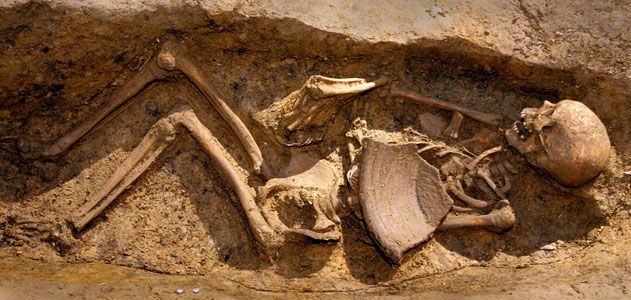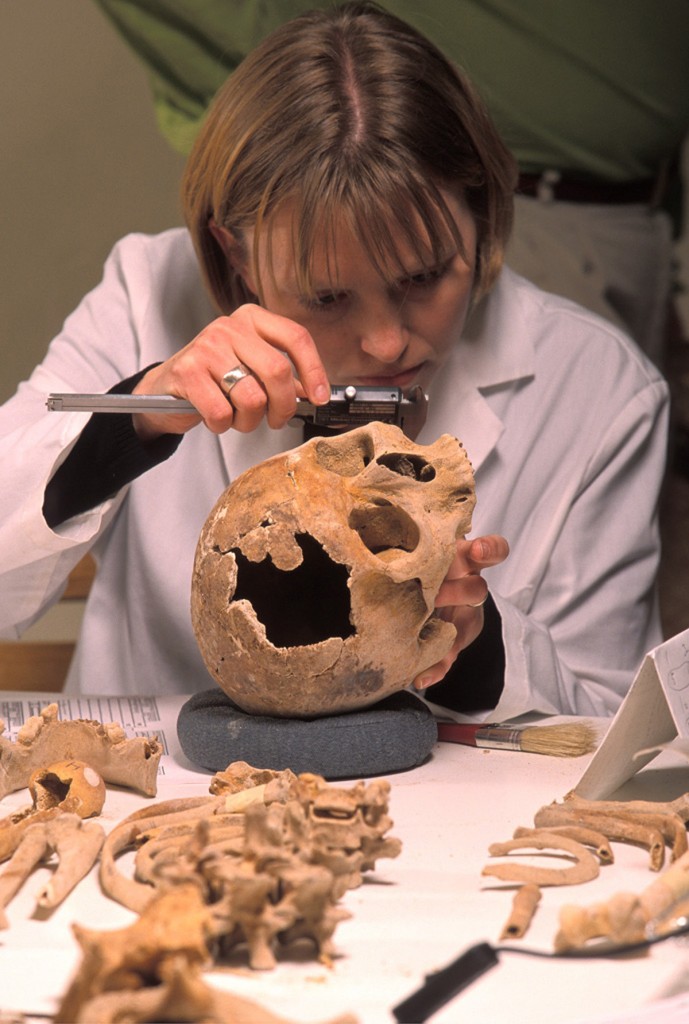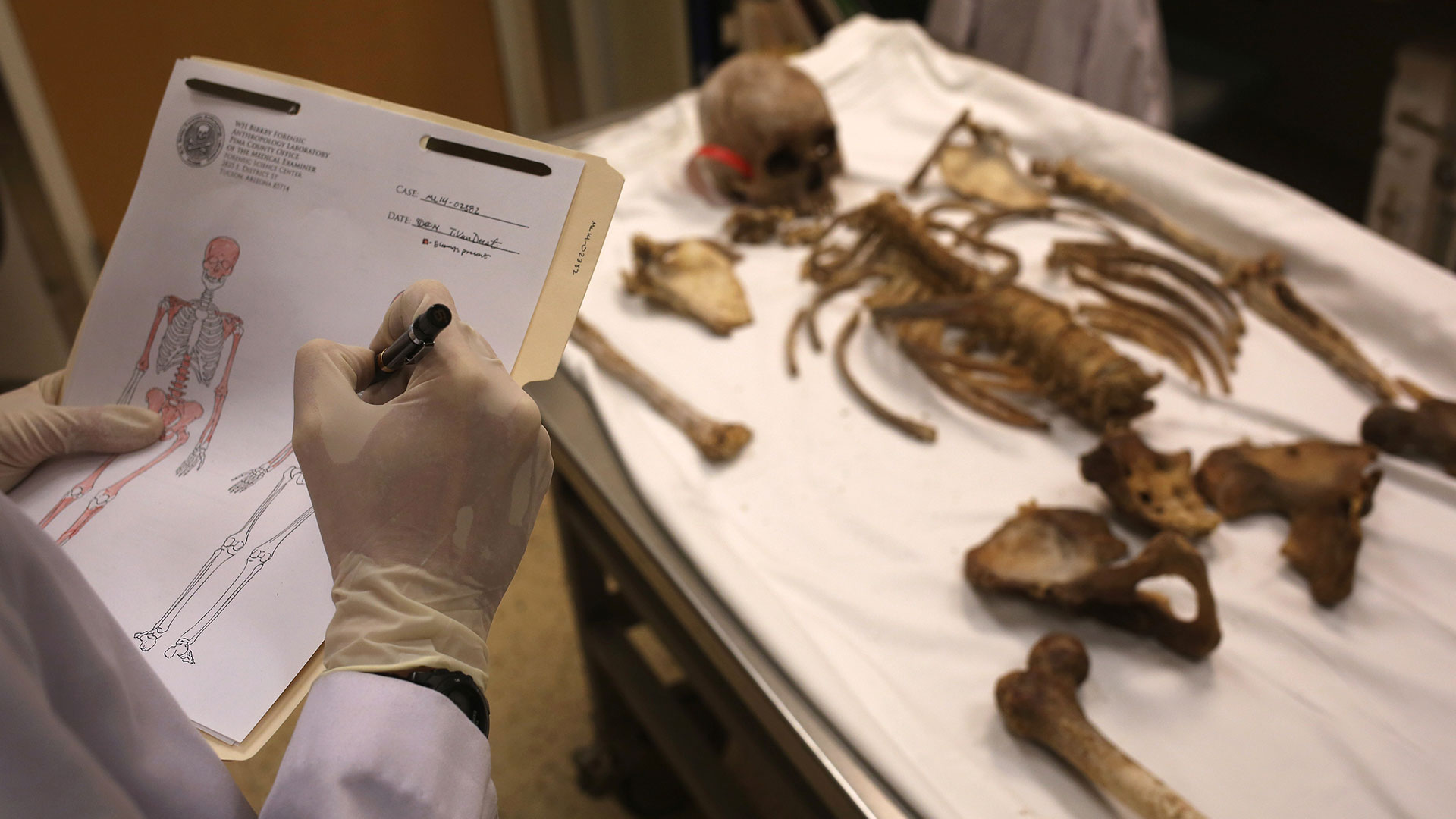Describe Crimes Investigated by Forensic Anthropologists
However forensic anthropologists can use evidence of skeletal trauma and condition to understand the mode of death. One way is by the size and the development.

Solving A 17th Century Crime Arts Culture Smithsonian Magazine
A forensic anthropologist might be called to assist in determining first of all if the remains are in fact human.

. Forensic Anthropology is the aspect of forensics that deals with the examination of human skeletal remains to help ascertain the identity of. Forensic Anthropology Date Essential Questions Activities. The Role of a Forensic Anthropologist in a Death Investigation Abstract.
The victim was 17-year-old Krystal Beslanowitch. Forensic Anthropology in War Crimes The end of the twentieth century was a particularly dark time in history in regards to human rights abuses and genocide. Forensic anthropologists also examine flesh fragmented body parts from mass fatality burnt bodies decomposed and mummified remains Nafte 2000.
In modern times forensic anthropologists have helped to reconstruct the nature and mechanism intent and purpose manner and circumstances of various inhumane instances of genocides and violent crimes. He marks the area and goes to get police to bring them back to the area. 8 The Krystal Beslanowitch Murder.
Heinous crimes and brutalities have decimated humanity throughout human history. Forensic scientists perform physical and chemical analyses on criminal evidence and report their findings to a court of law where physical evidence can be. The first police crime laboratory was established in 1910 in Lyon France by Edmond Locard.
Assist law enforcement with the location and recovery of human remains at crime scenes Cleans the bones so that they. Forensic anthropologists at the National Museum of Natural History find answers to a colonial cold case. Many hallmark scientific papers have come out of the research at the Body Farm and this new knowledge has been crucial in driving forensic.
Approximate age can be determined many different ways. Helping to identify the cause or manner of death. Inspection of a crime scene is a crucial step in forensic medicine and even the methods taught by forensic anthropology are essential.
The opinions or assertions contained on this site are the private views of the author and are not to be construed as those of any professional organisation or policing body. Generally forensic anthropologists DO NOT do any of the following. There are five different modes manners of death.
Forensic toxicologists focus on one of three main areas. The role a Forensic Anthropologist plays in a death investigation is crucial to the field of forensic science as a whole. That principle gave rise to the forensic sciences which are the accumulated methods for developing and analyzing.
Collect trace evidence hair fibers Run DNA tests Analyze ballistics or weapon evidence Analyze blood spatter Conduct autopsies What a forensic anthropologist DOES do to aid in a case. Natural suicide homicide accidental and unknown. If the remains are human then the anthropologist can assist law enforcement with the collection of the remains.
These are general definitions and specific jurisdictions may differ from those discussed here. Forensic Anthropologists understand the forms and variations of various forms of skeletal properties and apply their knowledge to their work in order to obtain reasonable conclusions. Bones can determine age the time of death and the manner of death.
Journal of Forensic Research. Whereas a thorough inspection can provide crucial information an approximate inspection can be useless or even harmful. Forensic analysis of evidence is often crucial to demonstrations of guilt or innocence.
Solving a 17th-Century Crime. And to describe the forensic examinations performed by the FBI Laboratory. The main focus of a Forensic Anthropologist is to process the crime.
James and Nordby 2003. Forensic Anthropologists play an important role in establishing the cause of death in an investigation. Forensic Anthropologists understand the forms and variations of various forms of skeletal properties and apply their knowledge to their work in order to obtain.
Their role is to present the results of their assessment of the skeletal remains impartially Saferstein 1982. Forensic anthropology application of physical anthropology to legal cases usually with a focus on the human skeleton. It was established in 1980 by the pioneering forensic anthropologist William Bass and is dedicated to the study of the rate of decomposition of the human corpse under various conditions that are relevant to crime investigation.
These individuals work together in order to draw conclusions from evidence primarily by applying their knowledge of the human skeleton to a case or subject at hand. According to Locards exchange principle it is impossible for criminals to escape a crime scene without leaving behind trace evidence that can be used to identify them. FBI Laboratory Services The successful investigation and prosecution of crimes requires in most cases the collection preservation and forensic analysis of evidence.
Forensics or crime scene analysis involves science applied to legal issues by assisting juries attorneys and judges in understanding the physical evidence of a criminal case and is critical to identify and convict a criminal. This convention put into force in 1951 confirmed that genocide whether. Used in the workplace athletics and probationparole.
Forensic anthropology uses the techniques of physical anthropology to analyze skeletal badly decomposed or otherwise unidentified human remains to solve crimes. Crime Scene Officer and Fingerprint Expert with over 13 years experience in Crime Scene Investigation and Latent Print Analysis. A hunter is in the woods and comes across what he thinks is a human skull.
Forensic anthropologists can assess the age sex and unique features of a decedent and are. One of the most modern most sensitive forensic tools helped solve the cold case of a teenager found bludgeoned to death by the side of the Provo River in Utah in 1995. Vocabulary Summarizing Strategies 922 What bones make up the human skeleton.
To determine impairment during a crime. The main focus of a. Forensic anthropology is a special sub-field of physical anthropology the study of human remains that involves applying skeletal analysis and techniques in archaeology to solving criminal cases.
Students will become familiar with the human skeletal system by completing Lab 8. This study reports 3 cases of burnt bodies. Forensic and physical anthropologists use the same standard techniques but forensic anthropologists use these techniques to identify human remains and detect the presence of crime.
The importance of an anthropological scene of crime investigation in. Vanessa Stanojevich The role a Forensic Anthropologist plays in a death investigation is crucial to the field of forensic science as a whole. Next to her police found the murder weapona blood-stained rock.
When human remains or a suspected burial are found forensic anthropologists are called upon to gather information from the bones and their recovery context to determine. In 1948 the United Nations proposed and approved the Convention on the Prevention and Punishment of the Crime of Genocide CPPCG.
Forensic Anthropology History Detectives Pbs

How Forensic Anthropologists Reconstruct Deadly Crimes A E True Crime
No comments for "Describe Crimes Investigated by Forensic Anthropologists"
Post a Comment